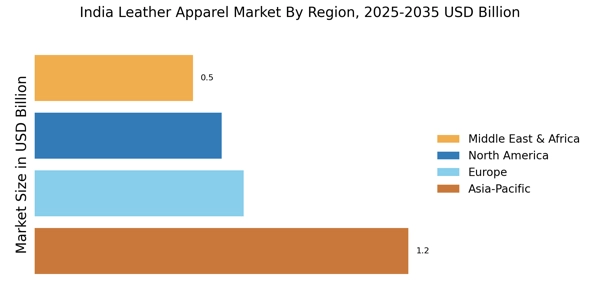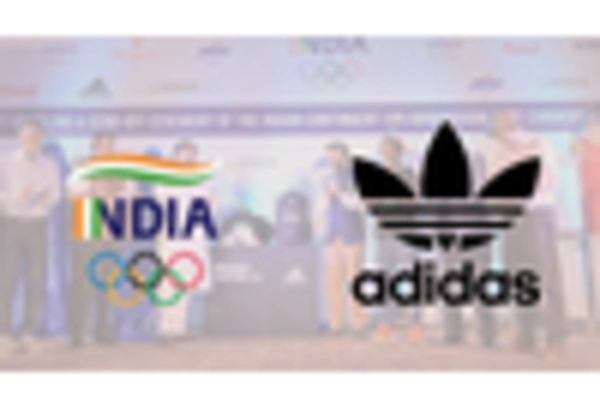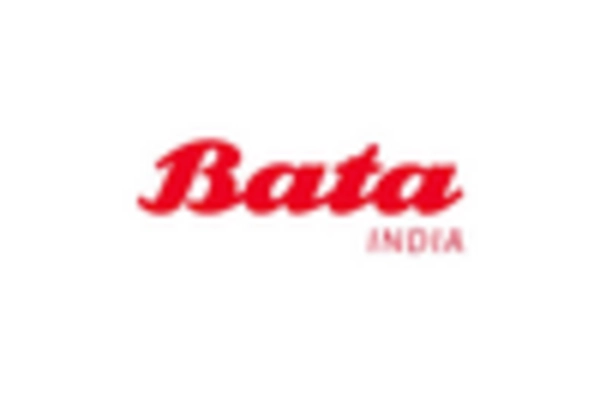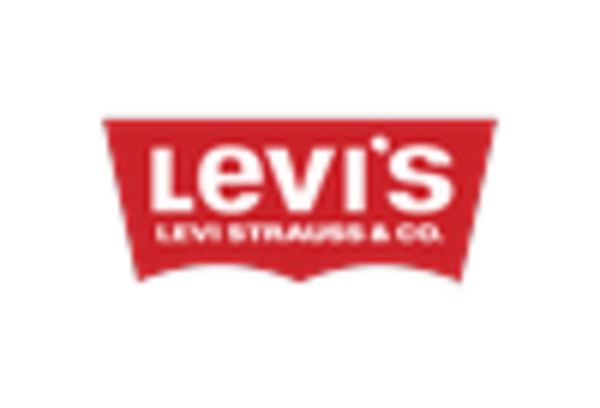The India Leather Apparel Market is characterized by a dynamic competitive landscape, driven by a blend of traditional craftsmanship and modern consumer preferences. Key players such as Bata India (IN), Hidesign (IN), and Puma India (IN) are at the forefront, each adopting distinct strategies to enhance their market presence. Bata India (IN) focuses on innovation in product design and sustainability, aiming to appeal to environmentally conscious consumers. Hidesign (IN), known for its artisanal leather goods, emphasizes craftsmanship and premium quality, positioning itself as a luxury brand. Meanwhile, Puma India (IN) leverages its global brand recognition to introduce cutting-edge sportswear, integrating technology into its products to cater to the active lifestyle segment. Collectively, these strategies contribute to a competitive environment that balances heritage with modernity.
The business tactics employed by these companies reflect a nuanced understanding of the market's structure, which is moderately fragmented. Localizing manufacturing has become a common tactic, allowing companies to reduce costs and enhance supply chain efficiency. This approach not only supports quicker response times to market demands but also aligns with the growing trend of sustainability, as companies seek to minimize their carbon footprints. The collective influence of these key players shapes a competitive landscape where innovation and operational efficiency are paramount.
In August 2025, Bata India (IN) announced the launch of its new eco-friendly leather collection, which utilizes sustainable materials and processes. This strategic move underscores the company's commitment to environmental responsibility and positions it favorably among eco-conscious consumers. By integrating sustainability into its core product offerings, Bata India (IN) not only enhances its brand image but also taps into a growing market segment that prioritizes ethical consumption.
In September 2025, Hidesign (IN) unveiled a collaboration with a renowned designer to create a limited-edition line of luxury leather bags. This partnership is significant as it not only elevates the brand's prestige but also attracts a new demographic of affluent consumers. By aligning with high-profile designers, Hidesign (IN) reinforces its position in the luxury segment, potentially increasing its market share in a competitive landscape where exclusivity is highly valued.
In October 2025, Puma India (IN) launched an innovative line of smart sports apparel that integrates wearable technology. This strategic initiative reflects the brand's commitment to staying ahead of market trends and catering to tech-savvy consumers. By incorporating technology into its product offerings, Puma India (IN) not only differentiates itself from competitors but also addresses the growing demand for multifunctional apparel in the sportswear market.
As of October 2025, the competitive trends in the leather market in India are increasingly defined by digitalization, sustainability, and the integration of artificial intelligence. Strategic alliances are becoming more prevalent, as companies recognize the value of collaboration in enhancing innovation and market reach. Looking ahead, competitive differentiation is likely to evolve from traditional price-based competition to a focus on innovation, technology integration, and supply chain reliability. This shift suggests that companies that prioritize these aspects will be better positioned to thrive in an ever-evolving market.


















Leave a Comment